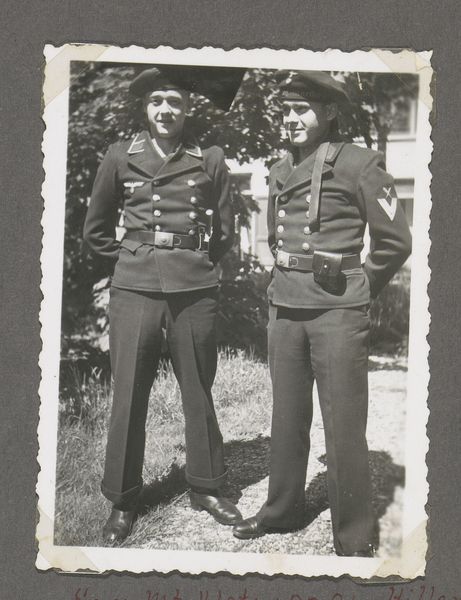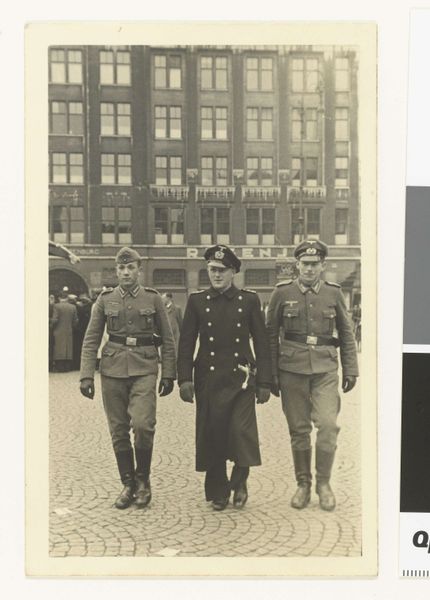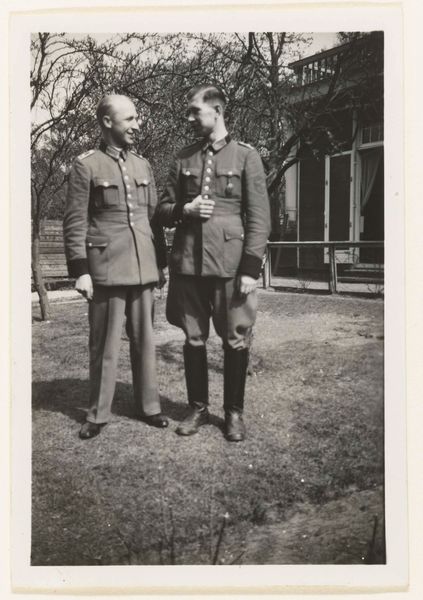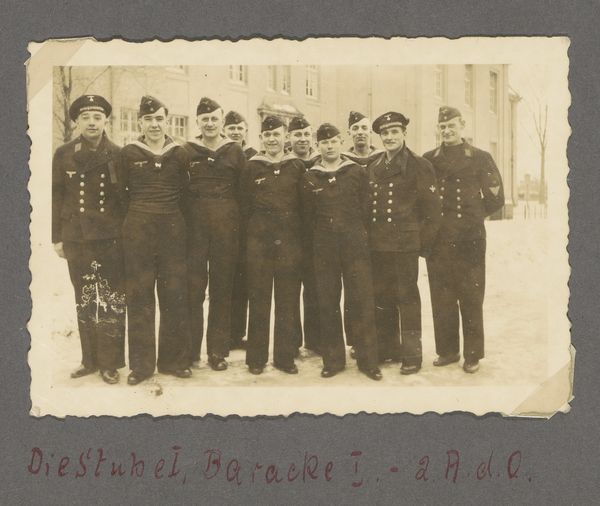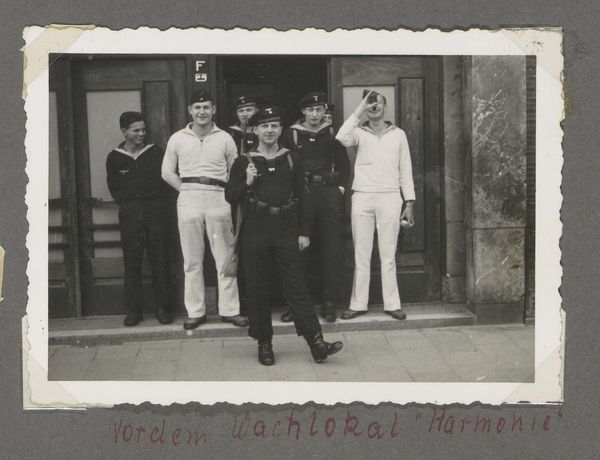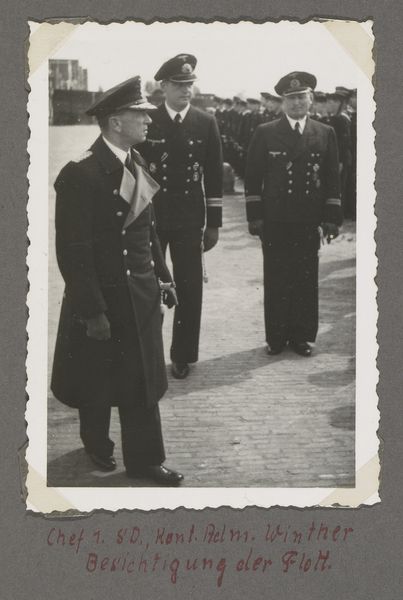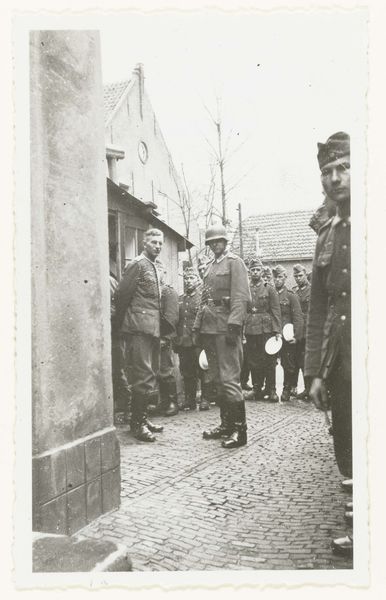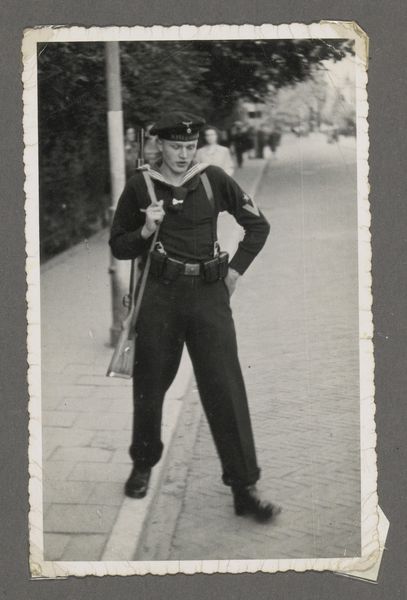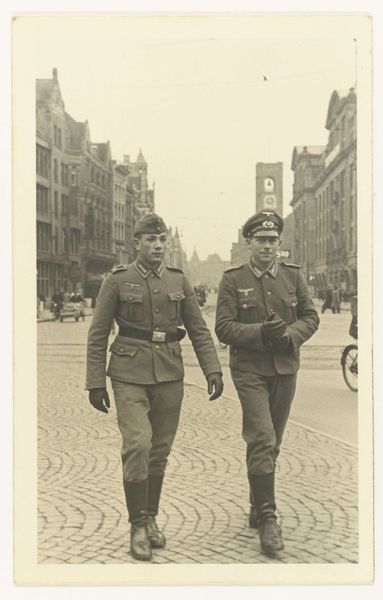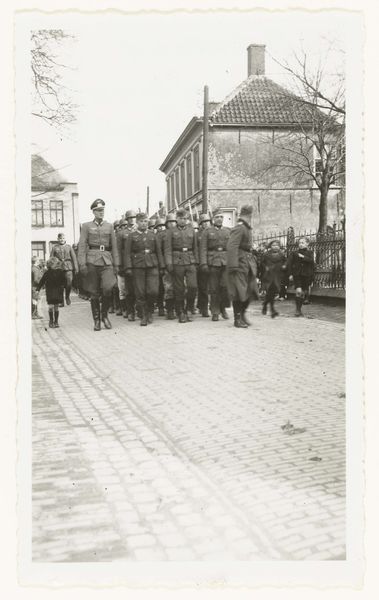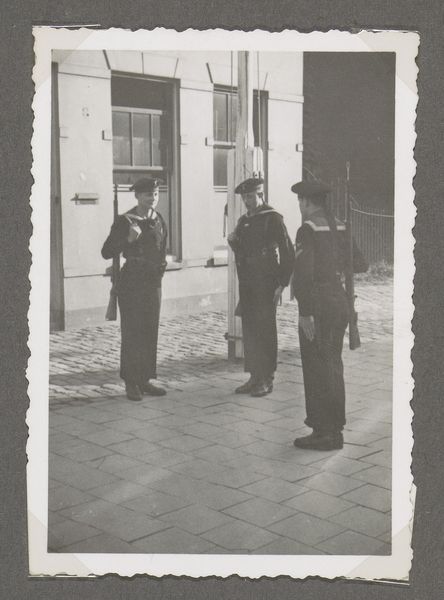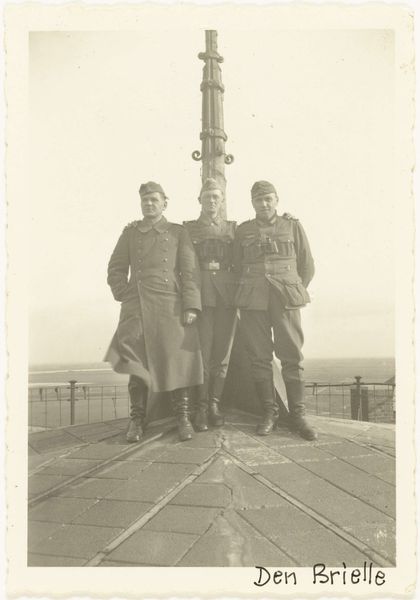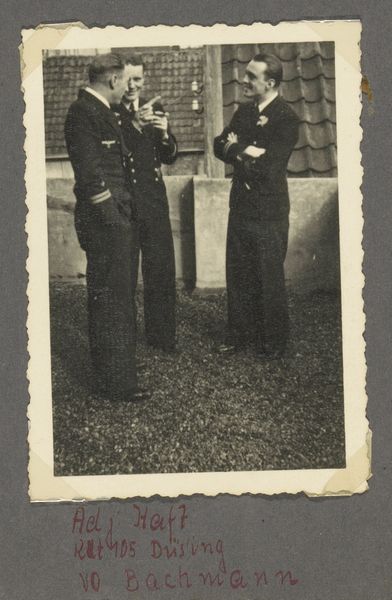
photography, gelatin-silver-print
#
portrait
#
photography
#
gelatin-silver-print
#
genre-painting
#
paper medium
#
realism
Dimensions: height 89 mm, width 139 mm
Copyright: Rijks Museum: Open Domain
Curator: Today, we are looking at a gelatin silver print of "Two Sailors," attributed to an anonymous photographer, and estimated to have been taken sometime between 1942 and 1948. Editor: It's striking. The uniformity of the sailor's dark clothing, combined with the washed-out quality of the print, lends it a somber and subdued tone, wouldn’t you agree? Curator: Absolutely, and understanding that context is critical here. The precise date places the photograph either during or directly after World War II, offering insights into the social environment surrounding such a depiction. What stories do you think this portrait tells, set against the background of wartime anxieties? Editor: Structurally, the composition emphasizes symmetry; these young men are framed head-to-toe, shoulder to shoulder, their faces partially obscured by the shadows of their caps, contributing to this aura of restraint. The backdrop is blurred almost beyond legibility. It gives a visual sensation of coldness and institutionalization. Curator: Quite so. I think this image allows us to consider the very idea of uniformed men, perhaps symbols of national duty, now removed from the sphere of battle and re-entering an altered civilian life. In what ways do you think their identities as sailors—and implicitly as agents of war—were negotiated or challenged during such a period? Editor: I would venture that, irrespective of its original purpose, the image has metamorphosed, in a way. It shows some of the base aspects of that aesthetic. You note the symbolism inherent to their role as uniformed servicemen. Curator: That is incisive. Consider, the cultural narratives that pictures like these advance concerning war and nationalism, specifically when images of militaristic forces may operate as vehicles for shaping ideology during volatile periods. Editor: And, from a purely formalist viewpoint, consider the balance—the stark whites contrasting with the uniform dark, providing not just literal definition, but an atmospheric one as well. It’s hauntingly done, and incredibly potent. Curator: Ultimately, perhaps a poignant illustration of the complex relationship between military life, representation, and societal context during and after periods of monumental unrest. Editor: Indeed. It's more than just a photograph; it’s a concentrated essence of an epoch, and quite revealing in terms of its method, and mood.
Comments
No comments
Be the first to comment and join the conversation on the ultimate creative platform.
